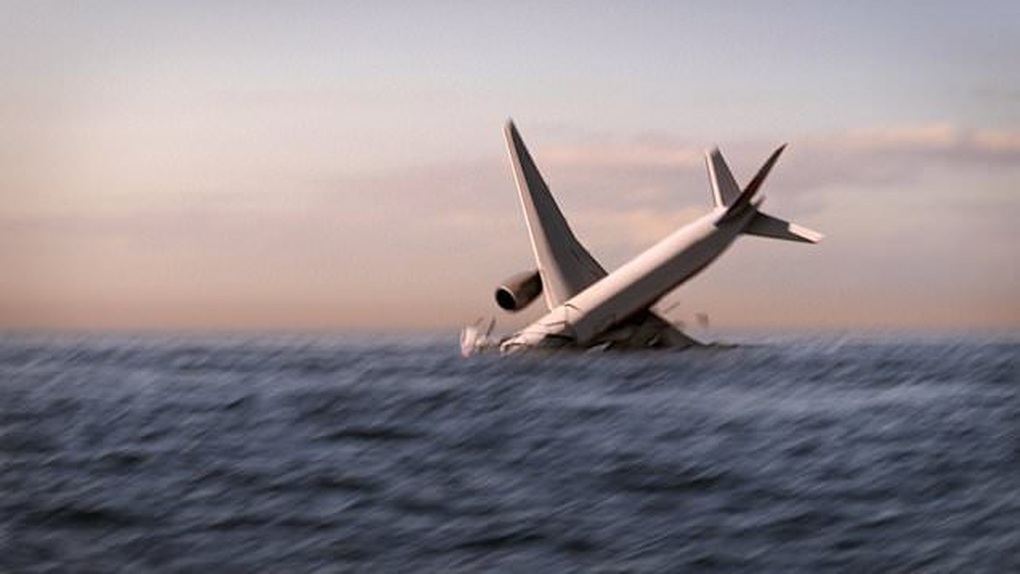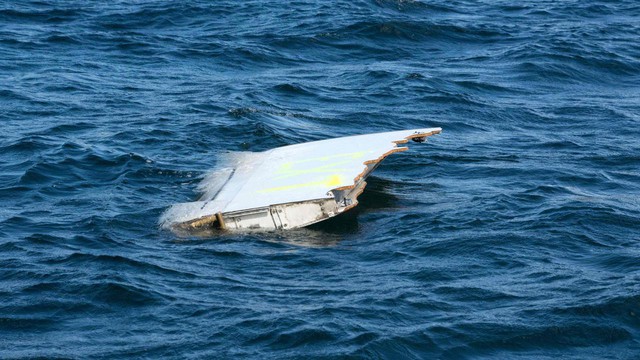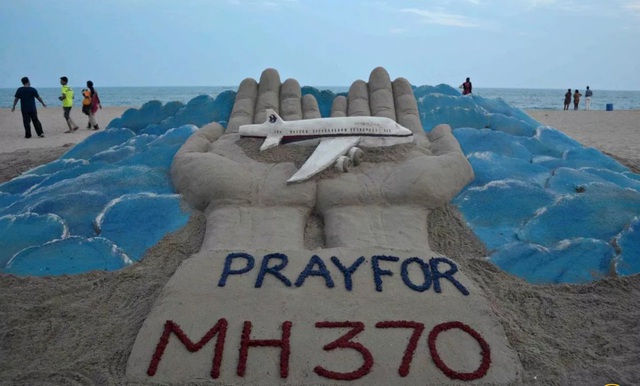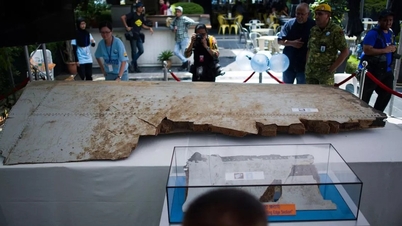6-second clue could help solve the mystery of flight MH370

3D image simulating the hypothesis that MH370 had a problem and crashed into the Indian Ocean (Illustration: Nat Geo).
The Telegraph recently reported that British scientists have discovered a signal that could help solve the mystery of the missing Malaysia Airlines flight MH370.
Researchers at Cardiff University (Wales) analyzed data from underwater microphones, capturing a 6-second signal recorded around the time the plane is believed to have crashed into the Indian Ocean.
They have proposed further tests to determine whether the final sounds could help pinpoint the resting place of the Boeing 777, which has been missing since March 8, 2014, when it disappeared with 239 people on board.
A 200-ton plane falling at 200 meters per second would release the same amount of kinetic energy as a small earthquake. This would be large enough to be picked up by microphones thousands of kilometers away.
There are two hydroacoustic stations capable of detecting such signals, one at Cape Leeuwin in Western Australia and the other at the British territory of Diego Garcia in the Indian Ocean.

Debris believed to be from missing MH370 plane
They were built as part of the Comprehensive Nuclear-Test-Ban Treaty monitoring regime and were both operational around the time MH370 is believed to have crashed into the Indian Ocean.
In their research, the Cardiff University team identified a signal that matched the time frame the plane may have crashed into the sea, recorded at the Cape Leeuwin station.
According to Dr Usama Kadri at Cardiff University, further research could solve the mystery of MH370, similar to how the Argentine navy submarine ARA San Juan was found on the seabed a year after an explosion sent it plummeting into the depths of the South Atlantic on November 15, 2017.
Series of shocking hypotheses about MH370

10 years have passed but MH370 remains a mystery
In March 2014, flight MH370 took off from Kuala Lumpur carrying 227 passengers and 12 crew en route to Beijing but disappeared from radar mid-flight and was never seen again.
The mystery of what happened to the plane and its passengers has intrigued many in the 10 years since it disappeared and now a UK expert claims to have located the flight in the Cambodian jungle using Google Maps. Ian Wilson, who said the remains of the plane were scattered across the jungle, measured the visibility on Google Maps and found the dimensions matched the missing plane.
This is not the first time someone has claimed to have found a plane in the Cambodian jungle. In 2019, he also used satellite imagery and sent an expedition to his proposed coordinates to find the wreckage that same year, but because his discovery location was too far away, the team was unable to reach it. Ian Wilson is in Cambodia and plans to hunt for what is believed to be the wreckage of MH370.
Even if the images Wilson took were of Flight MH370, it would still not explain why or how the plane ended up there. However, many theories have emerged over the years about what might have happened to the missing plane. Here are some of the most popular.
Invite readers to watch videos of interest on Family and Society
Which real estate segment has the fastest price increase in Hanoi recently?
Source: https://giadinh.suckhoedoisong.vn/thong-tin-moi-nhat-ve-may-bay-mh370-mat-tich-bi-an-bat-ngo-phat-hien-tin-hieu-co-the-giup-tim-thay-172240621093748879.htm


![[Photo] Prime Minister Pham Minh Chinh receives Swedish Minister of International Development Cooperation and Foreign Trade](https://vphoto.vietnam.vn/thumb/1200x675/vietnam/resource/IMAGE/2025/5/12/ae50d0bb57584fd1bbe1cd77d9ad6d97)
![[Photo] Prime Minister Pham Minh Chinh starts construction of vital highway through Thai Binh and Nam Dinh](https://vphoto.vietnam.vn/thumb/1200x675/vietnam/resource/IMAGE/2025/5/12/52d98584ccea4c8dbf7c7f7484433af5)

![[Photo] Prime Minister Pham Minh Chinh works with the Standing Committee of Thai Binh Provincial Party Committee](https://vphoto.vietnam.vn/thumb/1200x675/vietnam/resource/IMAGE/2025/5/12/f514ab990c544e05a446f77bba59c7d1)





























































































Comment (0)